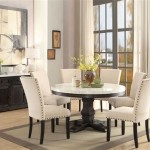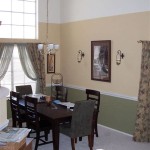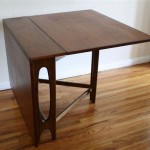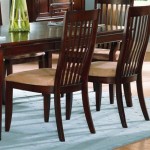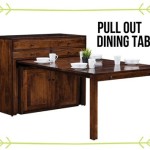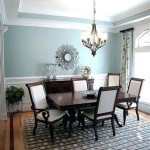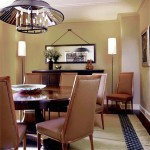Dining Room Table Chair Cushions: Comfort, Style, and Practicality
Dining room table chair cushions represent a significant element in enhancing the dining experience. They provide not only comfort during meals but also contribute to the overall aesthetic appeal of the dining room. The selection of appropriate cushions involves considering various factors, including the type of chair, the desired level of comfort, the style of the room, and the practical aspects of maintenance and durability.
The primary function of a dining room chair cushion is to provide cushioning and support, making prolonged sitting more comfortable. The cushioning material, design, and attachment method all contribute to the overall comfort level. Simultaneously, the cushion's fabric, color, and style can complement or contrast with the existing dining room decor, influencing the room's ambiance and visual appeal. Furthermore, practical aspects like stain resistance, ease of cleaning, and the longevity of the cushion are crucial for ensuring their continued use and value.
Choosing the Right Cushion Material
The material composition of dining room chair cushions significantly impacts their comfort, durability, and ease of maintenance. Common materials include foam, fiberfill, and blends of various synthetic and natural materials. Each material offers distinct advantages and disadvantages, making the selection process crucial for meeting individual needs and preferences.
Foam Cushions: Foam is a widely used cushioning material due to its ability to provide consistent support and resilience. Different types of foam exist, including polyurethane foam, memory foam, and high-density foam. Polyurethane foam is a cost-effective option that offers decent support, but it may degrade more quickly than other types. Memory foam conforms to the body's shape, providing customized support and pressure relief. However, it can retain heat, which may be uncomfortable for some users. High-density foam offers the firmest support and is more durable than other foam types, making it suitable for high-traffic areas. The density of the foam is a critical factor to consider. Higher density foam will typically last longer and provide more consistent support over time, resisting compression and maintaining its shape even with frequent use. Lower density foam, while more affordable, may flatten out more quickly and require replacement sooner.
Fiberfill Cushions: Fiberfill, typically made from polyester fibers, offers a softer and more plush feel compared to foam cushions. Fiberfill cushions tend to be less expensive than foam, making them an attractive option for budget-conscious consumers. The main advantage of fiberfill is its softness and the initial comfort it provides. However, fiberfill tends to compress over time with regular use, resulting in a loss of support and a flattened appearance. This compression means that fiberfill cushions often require more frequent replacement compared to foam cushions. The loft of the fiberfill, or its fluffiness, also diminishes over time, affecting the cushion's overall appearance. While fiberfill cushions can often be fluffed to restore some of their volume, this is only a temporary solution.
Blended Cushions: Many cushions utilize a blend of materials to optimize comfort and durability. For example, a cushion might consist of a foam core surrounded by a layer of fiberfill. This combination provides the support of the foam core with the added softness of the fiberfill. Another common blend combines natural fibers like cotton or down with synthetic fibers like polyester. This approach can improve the breathability of the cushion and provide a more luxurious feel. Blended cushions aim to balance the benefits of different materials while minimizing their drawbacks. The specific ratio of materials in the blend will influence the cushion's overall performance and longevity. Careful consideration of the blend composition is essential when selecting a cushion.
The choice of cushion material should also take into account any potential allergies or sensitivities. Some individuals may be allergic to certain types of foam or fibers. It is important to check the material composition of the cushion and choose hypoallergenic options if necessary. Furthermore, the breathability of the material should be considered, especially in warmer climates. Cushions that allow for good air circulation will help prevent overheating and improve comfort.
Fabric Selection: Aesthetics and Functionality
The fabric covering the dining room chair cushion is equally important as the cushioning material itself. The fabric determines the aesthetic appeal of the cushion and affects its durability, stain resistance, and ease of cleaning. A wide range of fabrics are available, each with its own unique properties and characteristics.
Cotton: Cotton is a natural fiber that is known for its softness, breathability, and affordability. Cotton fabrics are available in a variety of weaves and patterns, making them a versatile choice for dining room chair cushions. Cotton is absorbent, which can be both an advantage and a disadvantage. On one hand, it allows for good air circulation, keeping the cushion cool and comfortable. On the other hand, it is prone to absorbing spills and stains, requiring more frequent cleaning or the application of stain-resistant treatments. Cotton fabrics are also prone to wrinkling and fading over time, especially when exposed to direct sunlight. The durability of cotton varies depending on the weave and weight of the fabric. Thicker and tighter weaves will generally be more durable than looser weaves. Overall, cotton is a good option for those seeking a comfortable and affordable fabric, but it may require more maintenance than other options.
Polyester: Polyester is a synthetic fiber that is known for its durability, stain resistance, and wrinkle resistance. Polyester fabrics are often blended with other fibers to improve their comfort and appearance. Polyester is less breathable than cotton but is much easier to clean and maintain. It is also more resistant to fading and shrinking, making it a good choice for high-traffic areas. Polyester fabrics are available in a wide range of colors and patterns, making it easy to find a style that complements the existing dining room decor. The main disadvantage of polyester is that it can feel less luxurious than natural fibers like cotton or linen. However, advancements in textile technology have led to the development of polyester fabrics that are more comfortable and aesthetically pleasing. Polyester is an excellent choice for individuals with children or pets, as it can withstand spills and stains without requiring special cleaning.
Linen: Linen is a natural fiber that is known for its durability, breathability, and elegant appearance. Linen fabrics have a distinctive texture and a natural sheen that adds a touch of sophistication to any dining room. Linen is more expensive than cotton but is also stronger and more durable. It is also naturally resistant to bacteria and mildew, making it a good choice for individuals with allergies. Linen fabrics are prone to wrinkling, but this is often considered part of their charm. Linen can be more difficult to clean than other fabrics, as it may require dry cleaning or special washing instructions. However, its durability and elegant appearance make it a popular choice for high-end dining room furniture. Linen blends, which combine linen with other fibers like cotton or polyester, can offer a good balance of comfort, durability, and affordability.
Other Fabric Options: Beyond cotton, polyester, and linen, a variety of other fabrics can be used for dining room chair cushions. These include: * Velvet: A luxurious fabric with a soft, plush texture. Velvet adds a touch of elegance to any room but can be more delicate and difficult to clean. * Leather or Faux Leather: Durable and easy to clean, but can be expensive and may not be as comfortable as other fabrics in hot weather. * Outdoor Fabrics: Designed to withstand the elements, these fabrics are highly durable, stain resistant, and fade resistant, making them a good choice for families with young children or pets. * Solution-Dyed Acrylic: A synthetic fabric known for its exceptional colorfastness and resistance to fading, even when exposed to prolonged sunlight. Solution-dyed acrylic fabrics are also highly resistant to stains, mildew and moisture, making them a practical choice for outdoor use.
When selecting a fabric, it is important to consider the overall style of the dining room and the desired level of maintenance. Lighter colors can brighten up a room but are more prone to showing stains. Darker colors can add a touch of sophistication but may fade more quickly in direct sunlight. Patterns can add visual interest but may also clash with existing decor. Ultimately, the best fabric choice is one that balances aesthetics, functionality, and personal preference.
Cushion Attachment and Maintenance
The method used to attach dining room chair cushions to the chair is an important consideration for both comfort and aesthetics. The attachment method should be secure enough to prevent the cushion from slipping or sliding during use but also allow for easy removal for cleaning and maintenance. Common attachment methods include ties, Velcro straps, non-slip backing, and fitted cushions.
Ties: Ties are a traditional and versatile method for attaching cushions to chairs. They consist of fabric strips sewn onto the corners or sides of the cushion that can be tied around the chair back or legs. Ties offer a secure attachment and allow for easy adjustment of the cushion's position. They are also relatively inexpensive and easy to replace if they become damaged. However, ties can be visually distracting and may not be suitable for all chair styles. They can also become untied during use, requiring frequent readjustment. The length and thickness of the ties should be appropriate for the chair's dimensions. Thicker ties are more durable but may be more difficult to tie securely. Longer ties provide more flexibility in positioning the cushion.
Velcro Straps: Velcro straps offer a more modern and streamlined approach to cushion attachment. Velcro straps consist of two strips of Velcro, one attached to the cushion and the other attached to the chair. The two strips adhere to each other, creating a secure connection. Velcro straps are easy to use and provide a clean, uncluttered look. They also allow for easy removal of the cushion for cleaning. However, Velcro straps may not be as durable as ties, and the adhesive on the Velcro may weaken over time. The straps can also become detached if subjected to excessive force. It is important to use high-quality Velcro straps that are specifically designed for furniture applications. The straps should be securely attached to both the cushion and the chair to ensure a secure and long-lasting connection.
Non-Slip Backing: Non-slip backing is a simple and effective method for preventing cushions from sliding on the chair. The non-slip material is typically applied to the underside of the cushion and creates friction between the cushion and the chair surface. Non-slip backing is a good option for chairs with smooth or slippery surfaces. It is also relatively inexpensive and easy to apply. However, non-slip backing may not be as secure as ties or Velcro straps, and the cushion may still shift slightly during use. The effectiveness of the non-slip backing depends on the type of material used and the texture of the chair surface. It is important to choose a non-slip material that is compatible with the chair's finish to avoid damaging the surface.
Fitted Cushions: Fitted cushions are designed to conform to the shape of the chair seat, providing a snug and secure fit. Fitted cushions typically have elastic edges or drawstrings that secure the cushion to the chair. Fitted cushions offer a clean and tailored look and can prevent the cushion from shifting or sliding during use. However, fitted cushions are more expensive than other types of cushions and may not be compatible with all chair styles. It is important to measure the chair seat accurately before purchasing a fitted cushion to ensure a proper fit. Fitted cushions may also be more difficult to remove for cleaning.
Regular maintenance is essential for prolonging the life of dining room chair cushions. This includes vacuuming the cushions regularly to remove dust and debris, spot cleaning spills and stains immediately, and washing or dry cleaning the cushions according to the manufacturer's instructions. It is also important to protect the cushions from direct sunlight, which can cause fading and discoloration. Rotating the cushions regularly can help to distribute wear evenly and prevent them from becoming compressed in certain areas. Proper care and maintenance will help to keep the cushions looking their best and ensure their continued comfort and functionality for years to come.

How To Easily Reupholster Dining Seat Cushions Diy Beautify Creating Beauty At Home

How To Choose The Best Dining Room Chair Cushions Barnett Home Decor

Farmhouse Kitchen Chair Cushions Barnett Home Decor

Hayden Beige Dining Chair Pads Latex Foam Fill Reversible Barnett Home Decor

Custom Dining Room Chair Cushions Seat

How To Recover Seat Cushions Thistle Key Lane

Dining Chair Cushions Barnett Home Decor Made In Usa With American Or Imported Fabrics Page 4

Classic Café Dining Chair Cushion Set Of 2 West Elm

Dining Chair Cushion Makeover Stitched In Color

Windsor Dining Chair Cushion Set Of 2 West Elm


